Hip throw biomechanics analysis for wrestling sports
ˑ:
Dr.Hab., Professor A.G. Levitsky1
PhD D.A. Matveyev1
PhD, Associate Professor A.A. Potsipun2
PhD, Associate Professor O.V. Nerobeeva2
1Lesgaft National State University of Physical Education, Sport and Health, St. Petersburg
2St. Petersburg State University, St. Petersburg
Keywords: wrestling, O-Goshi, Uki-Goshi, sambo, judo.
Background. Hip throw may be described as one of the most popular and versatile techniques of modern competitive wrestling widely applied by the beginner and elite athletes including the Olympians.
Objective of the study was to analyze the hip throw biomechanics in wrestling.
Methods and structure of the study. Applied for the study purposes were the videos of competitive bouts available on YouTube and www.yandex.ru, plus findings of Italian wrestling sport researcher A. Sacripanti [2] whose ideas were advanced by the authors to offer the classification of wrestling actions that groups the throws into lever, block, couple and combined action groups with the relevant biomechanical models designed as required by basics of physics, and with the fourth group combining the previous three group models [1]. Our study and analysis were designed to model every throw version and identify typical technical errors made in the throw sequence.
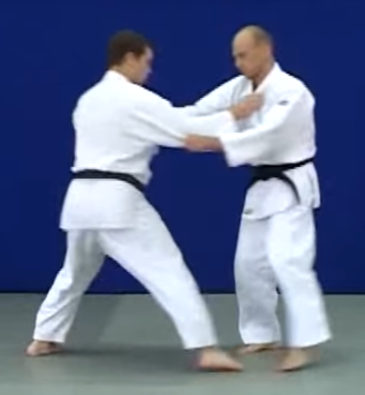
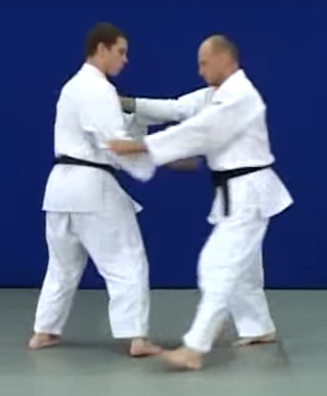
а b
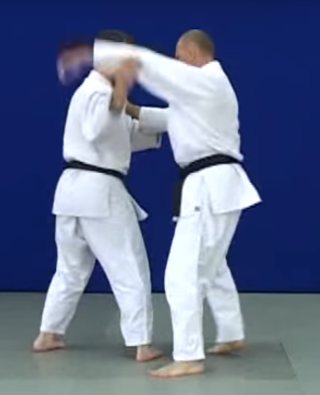
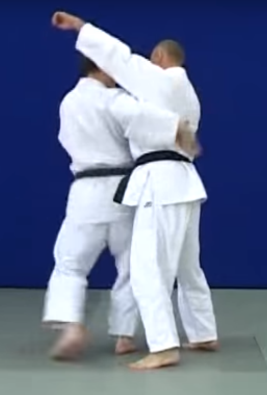
c d
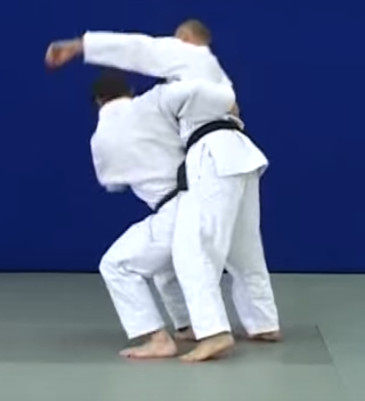
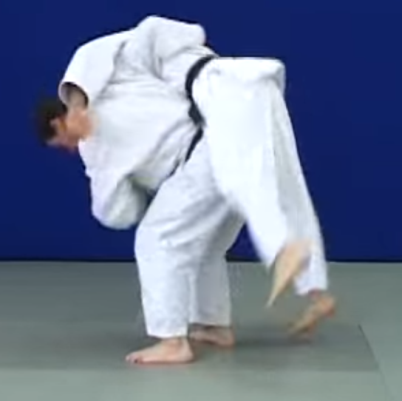
e f
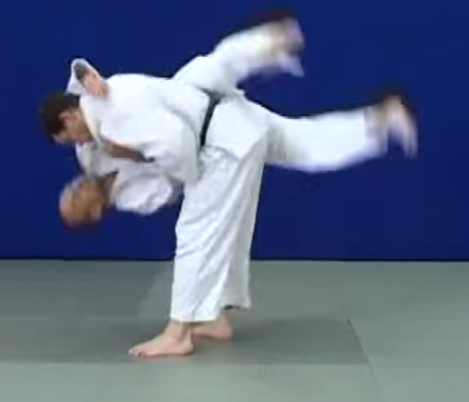
g
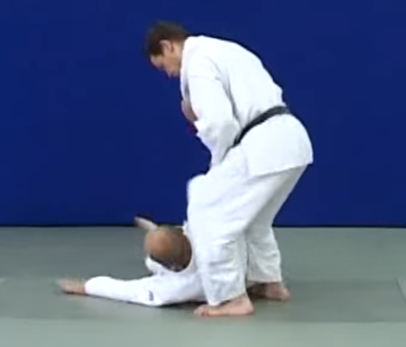
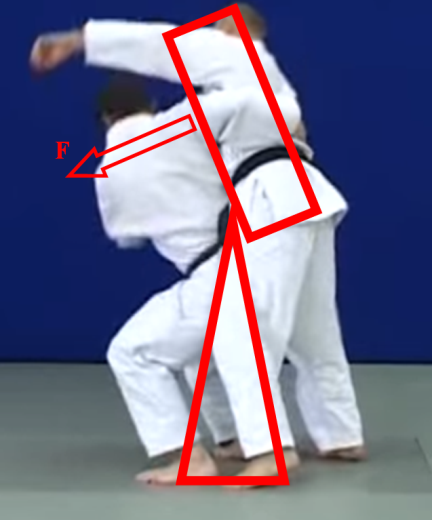
h i
Figure 1. Undercut (O-Goshi) version of the hip throw technique [3]
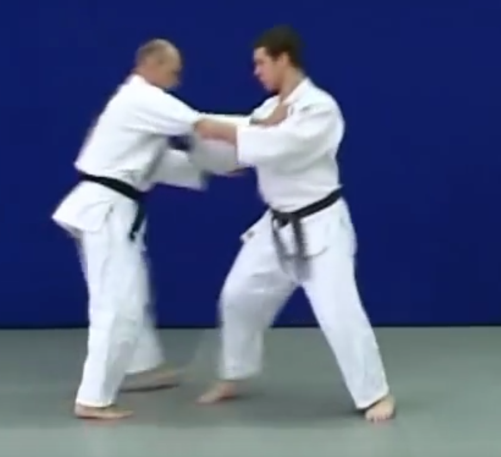
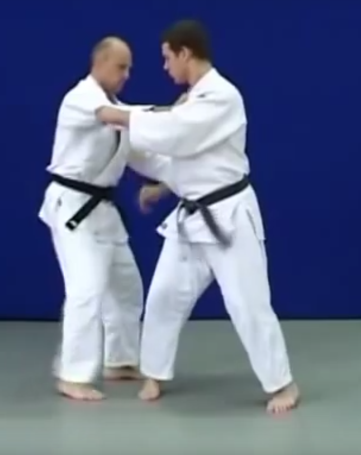
a b
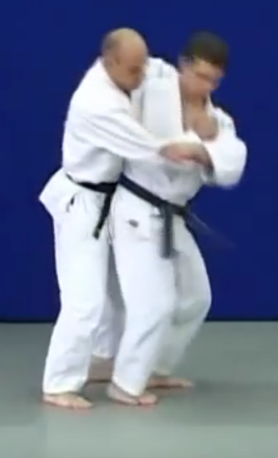
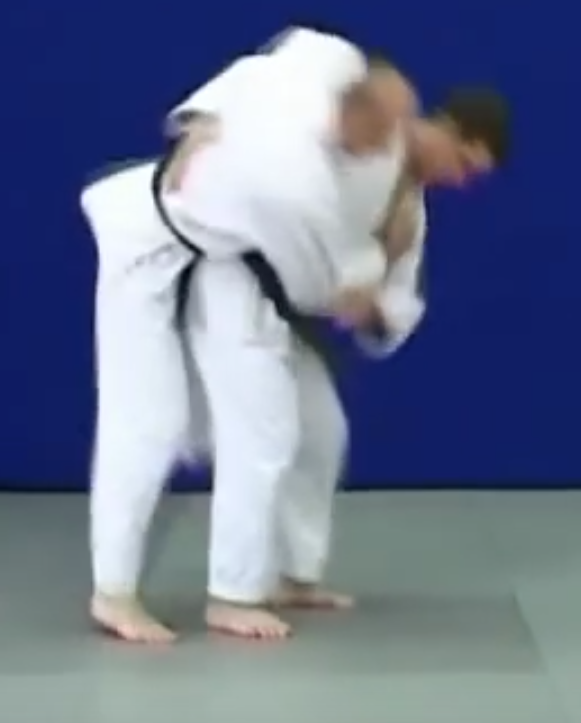
c d


e f

g
Figure 2. Twist (Uki-Goshi) version of the hip throw technique [4]
Given on Figure 3 is the mechanical block version of the hip throw technique.
Given on Figure 2 is the twist (Uki-Goshi) version of the hip throw modeled by the same lever action albeit free of the above undercut action and different in the pivot position and dislodging action. Since this version of the throw is modeled by the same lever action, the typical errors are the same as in the above O-Goshi version.
Study findings and discussion. Given on Figure 1 is the O-Goshi (undercut) version of the hip throw modeled by lever action, with the defender’s (Uki) body mass center (BMC) undercut by the offender’s (Tori) hip to facilitate the throw driven by force F applied to the end of the lever. Typical errors in the throw sequence may be listed as follows: failure to dislodge the BMC prior to the attempted throw; too high grip with straight legs in the attempted throw that claims too high force for success; too short lever due to the straightened or inadequately bent legs; failed grip and undercut; and too low amplitude of the action due to the too short shoulder movement. The throw execution phases modeled by the level and pivot are given on Figure 1 hereunder.
Given on Figure 3 is the mechanical block version of the hip throw technique.


a b


с d


e f

g

h

i
Figure 3. Mechanical block version of the hip throw technique [5]
The mechanical block model of the hip throw is given on Figure 3. The action may be modeled by cylinders, inextensible thread and weight as given on Figure 4, with the weight (Uki) presented as one of the cylinders.
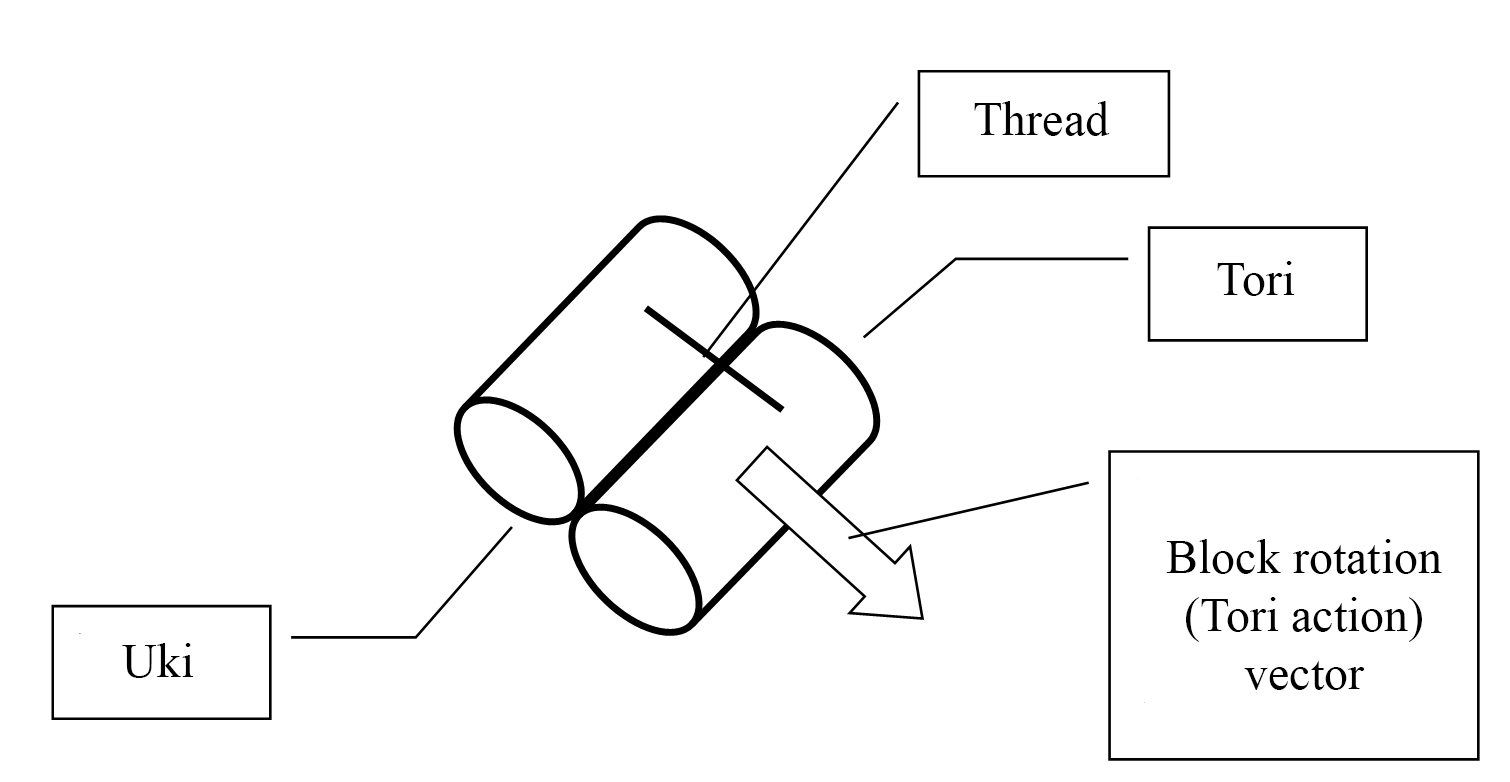
Figure 4. The mechanical block version of the hip throw technique modeled by two cylinders, inextensible thread and weight
Typical errors in the throw sequence may be listed as follows: (1) failure to dislodge the body mass center in the right position for success; (2) inadequate position of the block (straight legs of the actor) claiming too high energy costs for success; (3) too short radius of the block due to the poor grip and loose contact with the foe; and (4) too little block rotation angle due to the too short move of the shoulders. It may be advantageous to apply a combination of a level and block, with the lever action intended to move the foe into aerial position and the block action finishing the throw.
Conclusion. On the whole the study data and analysis demonstrate that the hip throw technique may be modeled by lever or block action, with a combination of both being acceptable; it is unlikely reasonable to give a preference to either version of the hip throw technique since every version is fraught with its own technical errors claiming too high energy costs for success; the 13-14-plus year-old trainees are recommended to analyze the hip throw biomechanics in the training process to better realize the physical aspects of each action to facilitate the technical progress; and study data and findings may be applied in the CYSS education and training process, in youth sport clubs and academic sport groups.
References
- Levitsky AG, Matveyev D.A., Potsipun A.A., Kholodkova O.V. Biomekhanicheskaya klassifikatsiya priemov sportivnoy borby [Biomechanical classification of actions in wrestling]. Teoriya i praktika fiz. kultury, 2017, no. 10, pp. 66–68
- Available at:http://www.academia.edu/2401906/A_Biomechanical_Reassessment_of_the_Scie... access date: 1.03.2018
- Available at: https://www.youtube.com/watch?v=EAobr9JzkXM: access date: 14.02.2018
- Available at: https://www.youtube.com/watch?v=SNTuDRgoOtg: access date: 14.02.2018
-
{C}
5. Available at: https://yandex.ru/video/search?p=1&filmId=9591336948101019598&text=%D0%B... access date: 03.03.2018.
Corresponding author: khubbiev@gmail.com
Abstract
The study offers an analysis of the hip throw biomechanics for different versions of the technique including O-Goshi, Uki-Goshi etc. The analysis was based on the classification of wrestling actions we offered before. The classification groups the throws into lever, block, couple and combined action groups. This means that a hip throw may be modeled by a lever/ mechanical blocking action or a combination of both. It is unlikely reasonable to give preference to either hip throw technique since every version of the throw technique is fraught with its own technical errors claiming excessive energy costs for success. The 13-14-plus year-old trainees are recommended to analyze the hip throw biomechanics in the training process to better realize the physical aspects of each action to facilitate the technical progress. The study data and findings may be applied in the CYSS educational and training process, in youth sport clubs and academic sport groups.

